
An optical image of the galaxy NGC2718. Astronomers studying the star formation activity in this and other spiral galaxies have confirmed and refined the close correlation, seen among these galaxies and subregions within them, between the numbers of stars present and the rate of making new stars.
New research from the Harvard-Smithsonian Center for Astrophysics reveals that the correlation between a galaxy’s stellar mass and star formation rate is a tight one.
The more stars a typical spiral galaxy contains, the faster it makes new ones. Astronomers call this relatively tight correlation the “galaxy main sequence.” The main sequence might be due simply to the fact that galaxies with more stars have more of everything, including material for making new stars. Alternatively, the mechanisms making new stars could be more efficient in some galaxies, or it could be some combination of these and other possibilities.
Star formation in spiral galaxies generates copious amounts of ultraviolet light that is absorbed by dust and re-radiated at infrared wavelengths, and infrared space missions have enabled scientists to measure more precisely the infrared emission from warm dust in galaxies. As astronomers probe very distant galaxies in the early universe and are forced to rely on measured fluxes rather than visual morphologies to interpret what is going on there, the main-sequence relationship has become an important tool for tracing when and how the universe generated its stars.
CfA astronomers Alexandros Maragkoudakis, Andreas Zezas, Matthew Ashby, and Steve Willner have recently investigated the galaxy main sequence with 246 star-forming galaxies that span a factor of ten thousand in their stellar masses and star formation rates, systematically exploring the main sequence relationship. They also separately explored discrete regions within these galaxies, including bright knots and circumnuclear regions, to determine whether they also followed a main-sequence-like relationship and if so, whether the correlations were identical or slightly different. Previous authors, for example, had found some clear variations in the correlation between galaxies when grouped by subtype, cosmological age, or other properties.
The CfA astronomers find that even across a wide range of stellar masses, at least for local galaxies, the correlation between a galaxy’s stellar mass and star formation rate is a tight one. They also find that a similarly close correlation holds within small subregions of galaxies, in particular the regions around the supermassive black hole nuclei.
Reference: “The sub-galactic and nuclear main sequences for local star-forming galaxies” by A. Maragkoudakis, A. Zezas, M. L. N. Ashby and S. P. Willner, 10 December 2016, MNRAS.
DOI: 10.1093/mnras/stw3180
arXiv


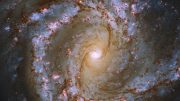
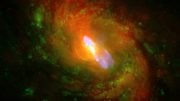
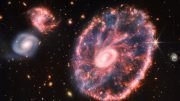
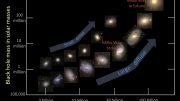
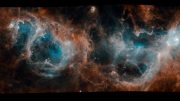


Be the first to comment on "Astronomers Study Correlation Between Galaxy Stellar Mass and Star Formation Rate"